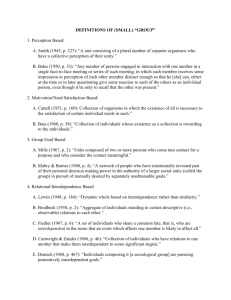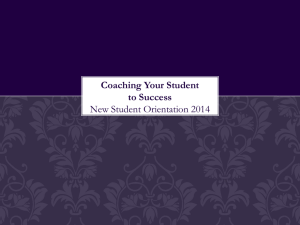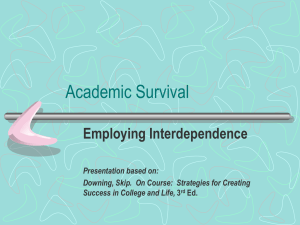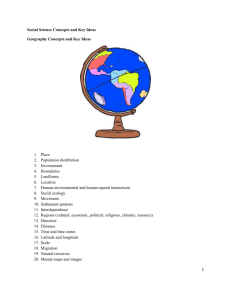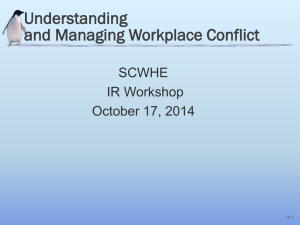Positioning higher education students as interdependent learners
advertisement
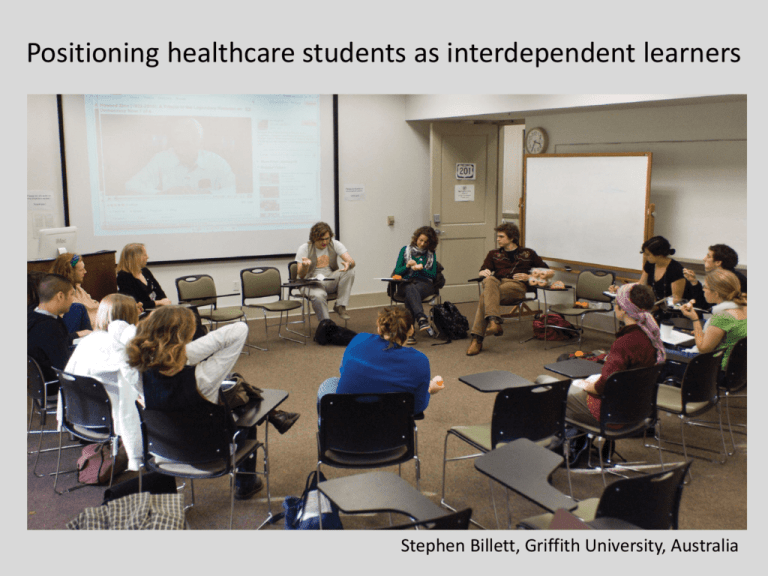
Positioning healthcare students as interdependent learners Stephen Billett, Griffith University, Australia Case …………. Three changes prompt considerations of re-positioning higher education students: i) advances in our understanding about human learning and development; ii) the kinds of knowledge and knowing towards which higher education needs to be directed; and iii) evolving means of student engagement. Proposes positioning them as interdependent, rather than independent learners Drawing upon history, anthropology and learning sciences Progression ….. 1. Learning 2. Knowledge and knowing 3. Learner engagement 4. Learner interdependence 1: Learning As the goals and provisions for supporting learning in higher education become ever more prescribed, it is timely to consider what constitutes learning processes and how these can be promoted. Helpful to distinguish between learning and development So, our ontogenetic development is what we bring to the process of experiencing (and learning) it both shapes and is shaped by what we experience. Learning: some premises Co-occurrence of engaging in everyday acting and learning Knowledge required to practice occupations is a product of culture, history and situation – it needs accessing and engaging with (i.e. inter-psychologically) Rich learning likely based on the: – i) kinds of activities and interactions available to students, and – ii) quality of students’ engagement with them. Hence, experiences provided in educational and practice settings are nothing more or less than invitations to change …….. Students taking up of those invitations is most salient. Contemporary accounts of learning Human cognition (and learning) is multi-modal engaging sensory and neural systems with experiences (Barsalou 2008; 2009) Experiencing through activities and interactions – activity structures cognition (Rogoff & Lave 1984) through those means Situations shape cognition (Billett 2003) through their affordances Simulations (Barsalou 2003) and grounded cognition (Kosslyn et al 2006) explain these processes Individuals’ mediation of immediate experience is premised on pre-mediate experiences (Valsiner 2000) So, physical and social settings are not neutral and learner intentionality is important An interdependence between individuals’ mediation and mediating physical and social factors , albeit shaped in personal ways Likely, it has been ever thus, …. Across human history, the most common and sustained mode of learning and innovation is through practice Central to humanity and human progress Similar processes for learning occurred in Europe, Asia and, likely, elsewhere Little evidence of direct teaching, even in educational institutions (e.g. yeshivas, madrassas) Vast majority of learning seems based on mimesis: observation and imitation, then practice These are interdependent processes, not based on the transmission of knowledge Whatever the origins of the didactic mode, it has always been a minor mode of knowledge acquisition in our evolutionary history. In the West, however, the didactic mode of teaching and learning has come to prevail in our schools to such an extent that is often taken for granted as the most natural, as was the most efficacious and efficient way of going about teaching and learning. This view is held despite the many instances in our own culture of learning through observation and imitation. (Jordan 1989: 932) So how do individuals learn outside of intentional didactic processes? Personally mediated processes Imitation (mimesis) (Jordan 1989, Tomasello 2004, Gardner 2004, Marchand, 2008) – high level cognitive functions Apprenticeship learning - active engagement with and construction of knowledge: - apprehending - to seize (Webb 1999), - to steal (Marchand 2008), - Japanese word for apprentice is minarai: one who learns by observation; - unobtrusive process of observation: minarai kyooiku (Singleton 1989) Ontogenetic ritualisation (Tomasello 2004) - ward rounds Importance of learner readiness (Bunn 1999, Singleton 1989) and assent (Mishler 2004) to engage 2: Knowledge and knowing Modernity led to the advent of mass education and ‘teaching’ Have learners’ (i.e. students’) sense of self changed from interdependence to dependence on teaching and taught processes? Educational consequences of ‘schooled’ societies • pre-specifying knowledge to be learnt • teaching of codified (i.e. declarative) knowledge • mass forms of teaching predominate • administration and economies of education privileged • discourse of ‘schooling’ came to dominate However, we need to go beyond that discourse …… Knowledge and knowing in higher education Declarative knowledge insufficient to account for the knowledge required for occupations, yet it has become the orthodox focus for higher education Discourse of schooling emphasises didactic teaching and deemphasises learning Not anti-educational or ‘schooling’ or ‘teaching’, just questioning some orthodoxies arising through modernity Educational purposes and assessments too often shaped by administrative imperatives, rather than those for learning. Key project for higher education: Promoting and engaging interdependence – with a range of sources and for diverse kinds of outcomes 3: Means of student engagement Broadening base of students’ engagement with learning experiences in educational, practice, social settings and through text and electronic sources These might comprise: Interacting with text, images sounds Working with others Studying with others Being supported by others Textually and symbolically engaged Managing engagement (i.e. time jealousy) Leads to knowing through: text/symbolic forms – accessing, engaging, interpersonal processes (e.g. ontogenetic ritualisations) procedural activities (developing and honing) observation simulations peri-personal space haptic engagement auditory and other sensory engagement 4: Learner interdependence In conclusion, all the above suggests students being positioned as being interdependent Independence vs interdependence Not helpful for tertiary students to engage in the epistemological adventures of Robinson Crusoe Engagement with others, teachers, technologies, artefacts etc requires interdependence Yet, students may need guidance on how to act and learn interdependently Not about improving ‘teaching’, but about teacherly practices that promote interdependence
